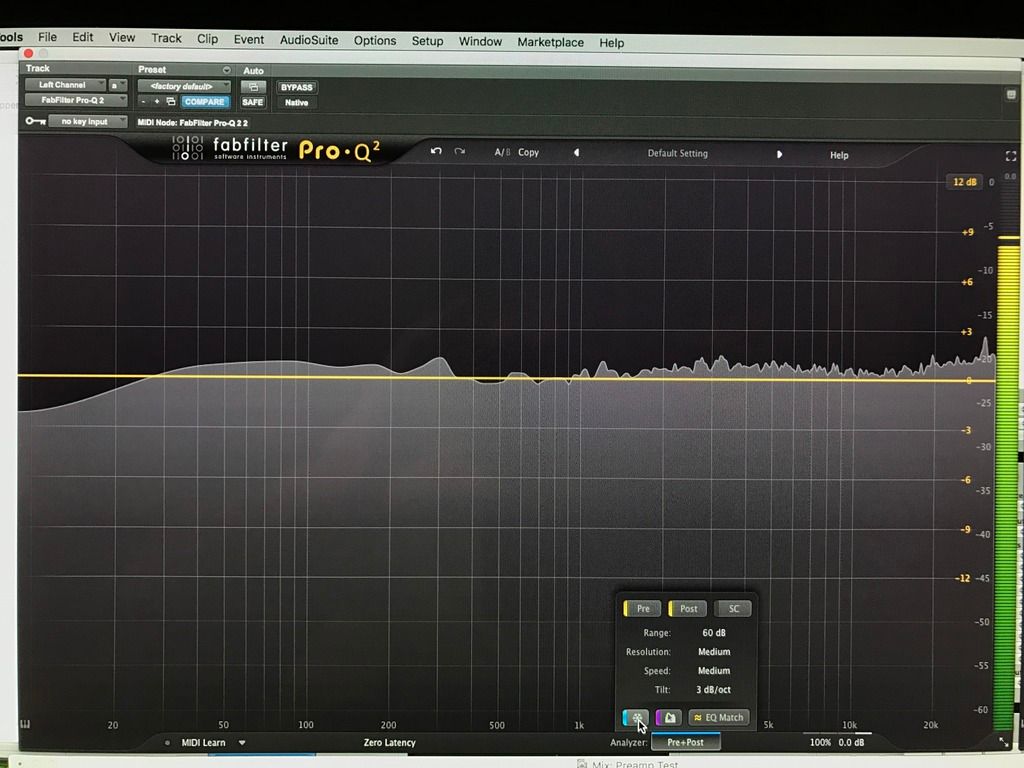BluegrassDan said:
Back to my original question. How do you think the preamp sounds now with the RC network added after the input transformer (two posts above)?
Will this RC potentially change the signal phase?
It should dampen the self resonance of the transformer, mitigating the bumps and corresponding phase misbehavior. If there is a problem with the transformer self resonance this could potentially solve it, improving the sound of the signal path.
There is a funny story involving sir Rupert and Abbey Road Studio, where he was called because a few channels on a mixer were sounding harsh and he found the problematic channels had a bump around 50kHz since they where missing the transformer's Zobel networks. The story say, here he concludes the bandwidth should be greater than 20kHz since a 50kHz problem was perceived. I don't know if I should said this but Mr Walker (RIP) told me about this story saying Rupert had the right conclusion for the wrong reasons, arguing the slight effects under 20kHz of the 50kHz problem has more influence than the actual 50kHz bump. That plus the known issues if the gain blocks can't handle the signal generating IMD. This is a discussion between two heavy weights, all we can do is design as smooth as possible to about 50kHz and call it a day, anything over that should be filtered, anything under that should be nursed.
jdbakker said:
That is, respectfully, an answer to a very different question.
I'm very interested in theoretical/practical reasons why measuring frequency/phase response by emitting a (controlled)
PN sequence and cross-correlating the received signal with the original, as is very common in RF channel sounding, would run into problems in audio systems (if one takes clipping/non-linearities into account). As noted I'm writing software to do such measurements, which I hope to release as an open and more automatable alternative to RMAA and the like. One of the reasons for doing so is the user would know
exactly what's happening under the hood, which is one of the common issues with RMAA and several of the tools you link to.
In other words: what is the
cause of the wobblies in the frequency response plot shown earlier?
JDB.
[I could imagine things like uncorrelated measurements, jittery sample clocks, nonlinearity, improper FFT windowing and/or insufficient SNR playing a role, but I would like to
know]
You're right, I thought I was answering to the OP who wouldn't really get to the theory behind it I guess.
The normal approach is to align it in time (time intercorrelation peak would indicate how much time is needed to align both signals), then the FFT is applied and the transfer function between the two is estimated. The measurement's reliability is given by the intercorrelation (in frequency domain) between the two signals, if too much noise get's in the way the intercorrelation will decrease at the problematic frequency, this results in confident measurements for some areas of the spectrum and not others.
Thinking about sound reinforcement makes easier to picture the problematic areas and timing issues, when you measure the sub woofer the intercorrelation starts to decay once over the x-over frequency as the environment and system noise gets much greater than the signal, also the delay because the speed of sound is different from the floor subs than from the hanging coils and usually needs some compensation. Of course for that kind of measurements the averaging and smoothing is much higher, usually starting from very smoothed, small average to get the first approach and alignment between the different speakers ways to a much averaged, less smoothed to fine eq tweaking and conflicting peaks removal.
As PRR said it's not the same test but the same tools could be used very effectively. When measuring a mic preamp for instance you expect very stable and low noise measurements, you probably won't even be looking the intercorrelation all the time as you do with rooms, averaging and smoothing could be quite small or non existent, increased averaging of course would provide more stable and precise readings, not necessary with greater exactitude.
The other hidden variable is the source signal, doing the transfer function you completely eliminate the source as a variable and sometimes music is used, as you have the sound getting out of the speakers and people already in the beach where the show takes place later. You still need content on every frequency and this is a compromise you sometimes have to take for this reasons or just for confort depending on how demanding the task is. While measuring equipment music makes no sense, as you don't need to be hearing what's going on, but still you can get away with a much less refined "random" signal than using the FFT directly on the turn around signal. I don't even know how well you can measure phase response in that way.
Note that RF measurements are usually much less precise than audio, marketing guys in this industry would kill a puppy for 0.1dB!
This is getting way too long, feel free to PM me about this, I'm interested. Also you could start a topic on the chamber I guess to discuss this.
JS



